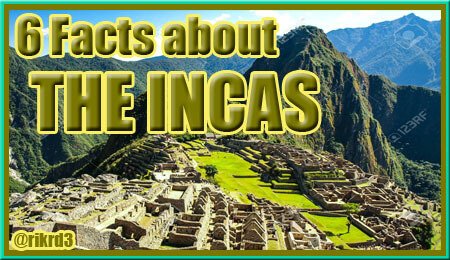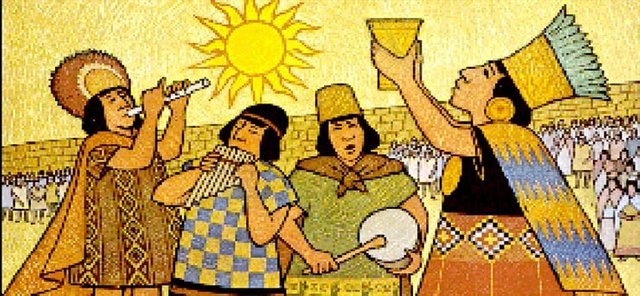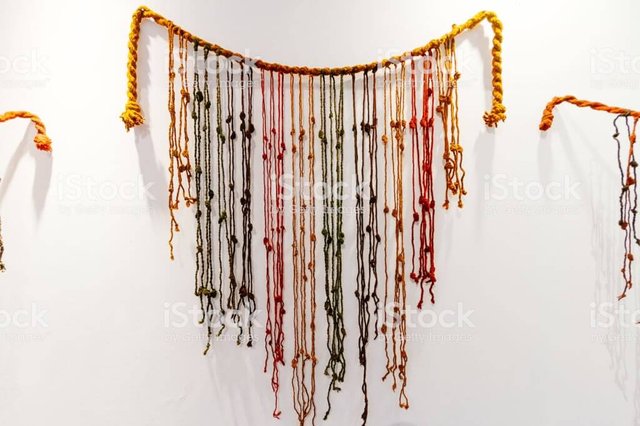
While the Aztecs tore the hearts of the people at the top of their pyramids, and the Mayan rulers pierced their tongues and genitals to prove their divinity, forty thousand Incas ruled almost fifteen million in their empire. The laws were prudent and convenient, creating a theocratic totalitarian empire in which no one starved.
Let's talk about what made the Incas so great and what eventually brought them to an end.
Divine Legitimacy

The Inca ruler Pachacutec Yupanqui thanks to the success in the fight against his enemies and with the help of the army captured the allied cities, creating a primary empire. The state grew and under the following rulers its size became comparable to the Roman Empire.
In their power, the Incas not only relied on military power. Being skilled diplomats and politicians, they relied on the ideological and religious justification of their power. They proclaimed themselves sons of the sun god, who came to earth to save people from chaos, hunger and barbarism. In legends and stories, they created the image of divine people who taught others about agriculture, art and other gifts of civilization.
Theocratic totalitarianism and Native American communism
At some point, the propaganda began to function properly, and the Incas became the ruling class, a sort of supreme caste of the empire. They did everything possible to ensure that their power was unbreakable, creating an incredible fusion of rigid theocratic totalitarian government and a condescending state system, even solidarity.
To begin with, they proclaimed themselves children of the sun, and all their actions were unmistakable and correct by definition. But at the same time, Sapa Inca, the "One", the ruler, had to be able to do everything his subjects could do. When it was time to plant potatoes, the ruler and his children went out into the field and planted the first tuber with a golden rod. When it was necessary to shave the flames, the first flame was also shaved as a rule first by the ruler. Thus, the people saw that the Inca knows his problems and is close to them, despite his divinity.

However, the peasants practically had no personal freedom; all his life was subordinated to certain cycles, if the peasant did not find a wife for himself before the age of twenty-five, the choice of the wife was made by a local official.
Under the fear of death, it was forbidden to close the door when the family was having dinner, since the official should have had the opportunity to look at the peasant and see what he was eating, if he was hungry and if he had too much food. In addition, the peasants were prohibited from moving to other parts of the empire. Each region had its own clothes, and if a peasant was in a region where they wore another garment, he could be executed.
Despite these rude rules if the peasant had problems, illness or hunger, they treated him for free and gave him food from the imperial stores. In general, the Incas did not have the equivalent of the local currency, only foreign, to trade with their neighbors. the products and essential elements were not exchanged, but were distributed by order of the officials of the imperial warehouses.
But the most surprising thing was that if the peasant was forced to steal food because of the famine, he was not executed, they executed the official who made this happen. If the official was found guilty of corruption, he was publicly executed, throwing a huge stone in his back, crushing it, as a warning to other embezzlers.
Efficient accounting system

The count was made by the kipukamayok, it was like a public accountant who was in each community, and as a result, all the data flowed to the capital, where the Gran Inca could at any time get information on how many tubers were collected in the past year. As such, the Incas did not use writing, and even some suggest that this was forbidden.
Medicine and construction

For example, complex surgeries were known long before the Incas, but in their reign they literally became works of art. Inca medicine was free and used sophisticated instruments, such as tweezers. And to sew stitches in wounds, the surgeons used the heads of large soldiers ants. Such ant was carried to the wound, forced to bite her and then her body was torn. The head kept the jaws clenched reflexively, and the wound was closed.
In construction, the Incas used cyclopean stones, which sometimes reached the height of a three-story house and weighed several hundred tons, always stacked millimetrically. The amazing buildings were often covered in gold, and around the temples they created complex compositions of pure gold, since this metal was considered sacred
Imperial roads

If the road passed through the desert, a wall was built so that it was not covered with sand, and tunnels and hanging bridges were made over the cliffs through mountains. These ropes were changed every year, although their strength was such that when the Spaniards arrived and the change of ropes stopped, one of those bridges collapsed only after five centuries of use.
Every two and a half kilometers an inn was established, where the traveler could get lodging and food.
Weapons and traditions of war
The Inca weapons differed little from the arms of other indigenous people in the region. As protection, they used wooden shields, the elite had bronze breastplates. Helmets of wood or rarely of copper.
Ranged weapons of the Incas were bows and spears. In the melee, spears, axes and hammers were used.

But the most surprising thing about the Inca army was the organization and consideration of the strategy, leading them to win more than once if the need to fight directly.
The problems and death of the empire
What could destroy such a powerful empire, where forty thousand Incas ruled fifteen million people? The problem was in the very rigid verticality of positions of power. When the conquistador Pizarro captured the Great Inca as a prisoner, all power was immediately paralyzed, and only after the homicide of the ruler, the war against the Spaniards begin. And of course the conquerors were lucky, they arrived at the moment when the empire was shaken by the consequences of the civil war, where two Inca brothers fought for power.
.jpg)
The amazing civilization that built this great empire still attracts researchers, because many treasures have not yet been found and several cities remain lost, mythical cities like El Dorado. The Incas are and will always be part of the magical history of the beautiful South America.
Thank you for reading.
Sources and references:
Es.wikipedia.org. (2018). Civilización incaica. [online] Available at: https://es.wikipedia.org/wiki/Civilizaci%C3%B3n_incaica [Accessed 25 Oct. 2018].
Euston96. (2018). Cultura inca | Qué es, resumen, características, religión, economía, lengua. [online] Available at: https://www.euston96.com/cultura-inca/ [Accessed 25 Oct. 2018].
Tiempo26.com. (2018). Los incas y los chancas hicieron un acuerdo de paz [Vídeo]. [online] Available at: https://tiempo26.com/los-incas-vs-los-chancas/ [Accessed 25 Oct. 2018].
Edgar-incas-litratura.blogspot.com. (2018). Arquitectura (Caminos y obras Publicas). [online] Available at: http://edgar-incas-litratura.blogspot.com/2011/10/arquitectura-caminos-y-obras-publicas.html [Accessed 25 Oct. 2018].
Helloforos.com. (2018). Medicina Inca - Peruanos - Hello Foros - [online] Available at: https://www.helloforos.com/t/medicina-inca/364775 [Accessed 25 Oct. 2018].
Images taken from Pixabay.com. (2018). Stunning Free Images: https://pixabay.com/
Congratulations! This post has been upvoted from the communal account, @minnowsupport, by rikrd3 from the Minnow Support Project. It's a witness project run by aggroed, ausbitbank, teamsteem, someguy123, neoxian, followbtcnews, and netuoso. The goal is to help Steemit grow by supporting Minnows. Please find us at the Peace, Abundance, and Liberty Network (PALnet) Discord Channel. It's a completely public and open space to all members of the Steemit community who voluntarily choose to be there.
If you would like to delegate to the Minnow Support Project you can do so by clicking on the following links: 50SP, 100SP, 250SP, 500SP, 1000SP, 5000SP.
Be sure to leave at least 50SP undelegated on your account.
Downvoting a post can decrease pending rewards and make it less visible. Common reasons:
Submit